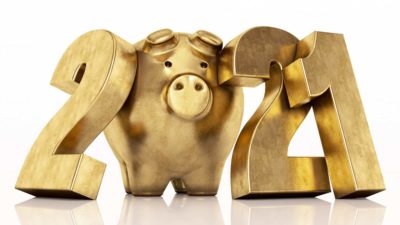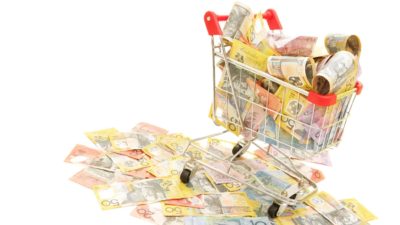Motley Fool Pro went to China because we thought outside investors weren't getting the truth about the state of the economy. What we saw on the ground confirmed our suspicions: China is slowing down harder and faster than outsiders had realised.
Three months on, the on-the-ground insights we picked up are beginning to emerge from the haze in the form of blinking red lights. Consider:
- China's largest bank, ICBC, cut its dividend.
- Steel demand fell 6% during the first quarter.
- Chinese Premier Li Keqiang has said that China has entered a "new normal" of lower growth.
- Iron ore import volumes are up only 0.7% this year despite a cheaper price and reduced domestic production.
- The People's Bank of China (the RBA of China) has cut interest rates and bank reserve requirements in an effort to speed up growth — twice.
None of this should be surprising to those of you who followed along with our China trip coverage, but the concern is starting to gain traction. I was on CNBC yesterday chatting this up.
That's great, you say, but what does China's slowdown mean for Pro?
What China's Slowdown Means for Pro
It doesn't take a creative mind to see how a Chinese slowdown tips the dominos. Commodity prices will stay weak, capital expenditures will fall, jobs will be lost, consumption will slow, and property prices will cool off. Ah, and all this will drive the RBA to keep rates lower for longer than most imagine.
None of the above involves leaps of faith — it's a simple, straightforward framework for what happens during a slowdown. The impact is starting to flow through the economy, as one Fool shared on our member-only forums:
I work intermittently in mining towns around WA. As you say, things have changed rapidly over the last year or so. The number of "for sale" signs on main street retail property is significant. You can park; with ease. Residential real estate is often down 30-40%. There are a lot of recreational fishing boats for sale.
I felt somewhat detached from it all. But then 2 months ago our small apartment became free and we put it out for rent. It is in Cottesloe, on Marine Parade 10m from the beach with unobstructed sunset views, though somewhat tired (for East coasters, it's a bit like Perth's Bondi). Still, we have always been conservative on asking rent ~10% below market to ensure full occupancy.
10 weeks later, we have spent 6k on renovations, dropped the rent a further 20% and had one enquiry. Fortunately, like yourself, this isn't a matter of life and death and we aren't heavily geared or in danger of getting behind on the mortgage. But if we are having trouble with an apartment that usually rents itself……
WA is definitely looking at some tough times.
But while it doesn't take a creative mind to imagine the knock-on effects of a Chinese slowdown, it does take some discipline in order to not get smashed under a falling domino.
Our approach today at Pro is the following.
First, and most obviously, avoid commodity producers, their servicers, and their lenders. We tend to avoid investing in commodity producers because they're capital-intensive price takers, but our outsized concerns about slack demand and strong supply make this a no-fly-zone.
Second, double down on recurring revenue. Focus on companies with loyal customers who love services and products so much that they don't blink at price increases. Companies like Altium Ltd. (ASX:ALU) and BURSON FPO (ASX:BAP), for example, have muscled through big price increases in the past year that have not "decreased volumes one little iota" according to Burson CEO Darryl Abotomey.
Third, invest in companies that will grow whether China or mining booms or busts. Companies like Bellamy's Australia Ltd. (ASX:BAL) are gobbling up market share here and abroad, and we're happy that the Pro portfolio's companies have grown sales at a weighted average 22% over the past year vs. just 10% for the ASX 200.
Fourth, focus on clean balance sheets. During a slowdown, companies with strong balance sheets play offence and gain market share, while companies burdened with debt slash strategic expenses like R&D and marketing. The strength of our companies' balance sheets really shines when you compare net debt as a percentage of market capitalisation for the Pro portfolio of only 2% to the 33% of the bank-heavy ASX 200. When the tide goes out, we'll discover many companies were swimming naked.
Fifth, get global exposure. While about 1/3 of the profits earned from the ASX 200 flow from outside Australia, a rich 2/3 of the Pro portfolio's value comes from international sources. That extra global heft will smooth our returns, shield us from a softening local economy, and give us upside to a falling Aussie dollar.
Finally, put the pieces together with the right position sizing and offsetting traits that will reduce our risk without sacrificing return.
In the end, it all gets back to the core Foolish philosophy: Invest in great businesses at good prices and let time, fundamentals, and great management do the heavy lifting for you.
Yes, we're worried about China — and Australia — but tough times come and go. It's the investors who stick with great companies throughout who bank winning returns, and that's our move — today, tomorrow, and forever.
Foolish Best,
Joe Magyer
Portfolio Manager, Motley Fool Pro
This article article was originally published in Motley Fool Pro on 13 May 2015.










